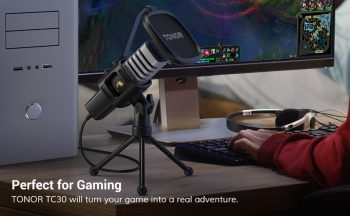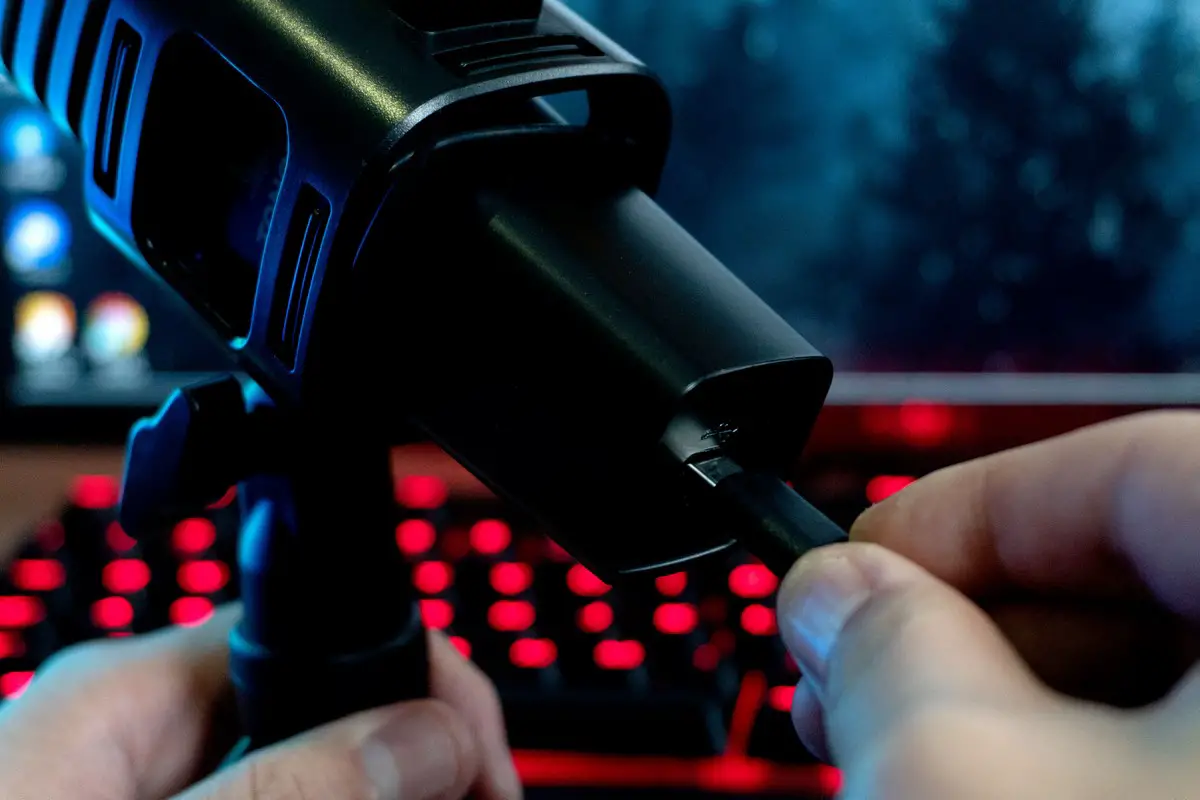
Level up your streams and podcasts with the TONOR cardioid condenser USB microphone
Over the past couple of years, many of us have experienced our fair share of video conference calls with classmates from school or colleagues at work. To be honest a lot of times this can be a bit unbearable as many people are using the microphones built into their computers or webcams or tablets, which honestly don’t always sound the best.
If you’re looking to level up your video conference calls, or maybe you’re a gamer and want to improve their streams, or you want to create a podcast, then it’s most definitely time to start investing into a proper microphone. Some of the more popular microphones can get pretty expensive and if you’re a bit hesitant dropping that much money, then perhaps the TONOR cardioid condenser USB microphone might be worth looking at.
TONOR TC30 USB microphone

The microphone itself features a cardioid pickup pattern with off-axis suppression, meaning that it will only pick up your voice (or whatever the microphone’s pointed towards) while at the same time suppressing background noise. Since most of us probably don’t have an acoustically treated room, this will help make your streams, voice calls, or podcasts sound a lot cleaner.
The TC30 is also small and compact enough where if you need to bring it around with you while you travel, that will not be an issue either.
Tips for getting the most out of your microphone
The goal of a microphone is to pick up audio. This is true regardless of how you plan to use it, whether it’s for work, streaming, recording podcasts, and so on. While more professional microphones can help to a certain extent, there are some best practices you might want to consider that will help you squeeze out the best-possible audio regardless of the microphone you use.
Keep things quiet
Also, if there’s someone in the living room watching TV, move to a different room that is quieter and has a door. You could also invest in thicker curtains for your windows which to a certain degree, can also help act as sound absorption material.
Position your microphone properly
With some more directional microphones, speaking into the side or having it pointed away from you will result in the audio being quieter and muffled. Also, ensure that the microphone’s back is pointed towards a possible sound source, like your speakers for example.
Since a lot of microphones tend to pickup audio that’s placed in front of it, having it pointed as far away from a sound source will ensure that as little background noise bleeds into the audio as possible.
Use headphones where possible
While there is software that can help eliminate background noise, it isn’t always perfect and headphones are generally the best solution in these cases.
Control your gain
It’s always a good idea to do a quick test and check the gain settings in your apps before hitting the record button to ensure that you don’t sound too loud or too soft.
Conclusion
Hopefully, together with the TC30 and some of the tips and tricks we highlighted above, your future conference calls, streams, and podcasts will end up sounding a lot more professional than ever.
- Plug and Play: With a USB 2.0 data port, no additional driver is required. TC30 is compatible with Windows, macOS and Linux....
- Cardioid Pickup Pattern: The mic has a cardioid pickup pattern and an excellent off-axis suppression function, allowing it to...
Note: this article may contain affiliate links that help support our authors and keep the Phandroid servers running.
